Aside from roller coasters, just about every major amusement park of the 20th century had some sort of flume ride. Flumes date back over 150 years, originating as a method to move heavy objects. Man has been using flowing water to move things for centuries, but the idea of creating artificially sloped “V” shaped trenches filled with running water to eliminate “log jams” is credited to James W. Haines in 1868. It took until the 1960’s before modern log flume rides were perfected, but the three main types of water rides -- Shoot the Chutes, Rapids, and Log Flumes -- all draw on technology from industrial log flumes.
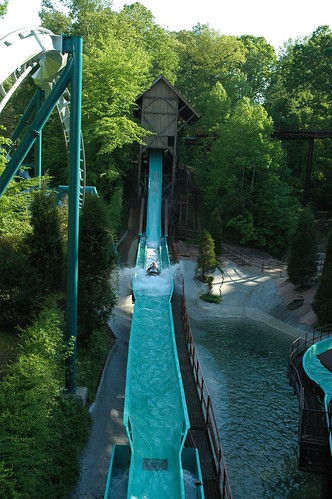
Modern log flumes were developed initially by Arrow Dynamics in the 1960’s, and much of the design has remained relatively unchanged. Guests ride in elongated vehicles that are typically shaped and themed to look like logs, and are pushed by water that is pumped into different parts of the course by high flow-rate pumps. Most log flumes also use some type of conveyor belt lift, and also use gravity to help propel the logs and water down the course. A majority of log flumes have some variety of drop, which creates a splash, getting guests wet. Quite a few parks have chosen to use the long course of a log flume to tell a story, and many are elaborately themed like Disney’s Splash Mountain,

Knott’s Timber Mountain Log Ride, and Dudley Do-Right’s Ripsaw Falls at Islands of Adventure, quite possibly the wettest log flume on the planet.
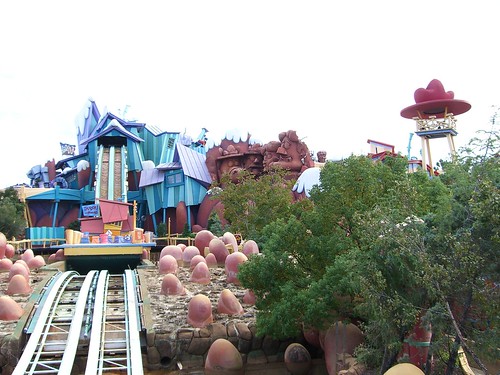
In recent years, the old-fashioned log flume has been getting some upgrades as theme parks have been merging log flume and roller coaster into what is now referred to as the water coaster. The integration of roller coaster wheels and track with standard log flume technology allowed designers to create different sensations and greater downhill speeds. Skull Mountain at Six Flags America was one of the world’s first water coasters, and while the ride no longer exists, water coasters are still being built around the world with one of the best being Journey to Atlantis at SeaWorld Orlando.

Shoot the Chutes rides are some of the oldest water rides that have been developed for theme parks, and typically represent the easiest way to get wet in the theme park. Some are a simple lift hill followed by a steep, soaking drop, while other have integrated the technology into far more than a simple giant splash like Jurassic Park the Ride
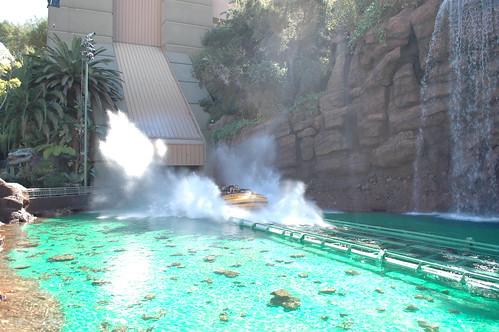
and Escape from Pompeii.

However, just about every one of these rides has a splash down section that not only soaks the riders, but also drenches guests watching nearby. Some of the most famous theme park rides in the world utilize technology derived from the standard flume -- for example, Pirates of the Caribbean and It’s a Small World, and while riders of these slower dark rides typically don’t get wet, water is critical to the ride’s operation. Disney is rumored to be making even more advancements with this technology for the upcoming Avatar boat ride.
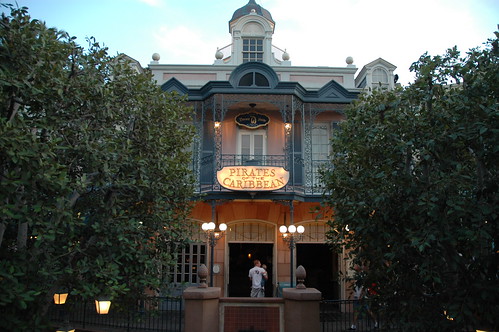
Rapids rides, one of the most likely places to see soaked guests in a theme park, use water as the primary source of propulsion. Rapids rides typically take up much larger footprints, require more complicated grading, and far more water than log flumes or Shoot the Chutes rides. Entering round rafts, riders are propelled down a river-like course featuring hills and rapids created by bumps and projections into the river. These rides also typically feature geysers, water canons, and/or waterfalls to ensure every guest in the raft gets equally wet. Grizzly River Run and Bluto’s Bilge Barges are two of the best and wettest rapid rides in the country.
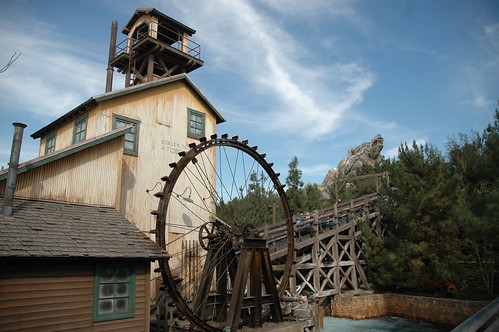
Now, using water to literally push a boat down a course using pumps or gravity is not the only way to use liquids to move ride vehicles. Hydraulics are a technology that’s been around a long time, but is relatively new to theme park attractions. Similar to pneumatics, ride vehicles can use hydraulic motors to compress hydraulic actuators to move the vehicle in different directions. Typically hydraulics are used in stationary motion simulators like Disney’s Star Tours,
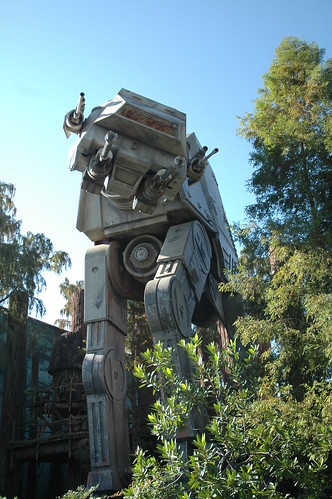
the former Star Trek: The Experience,
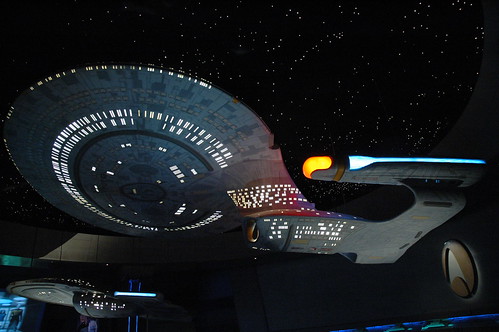
and SeaWorld’s Wild Arctic. Hydraulics are used for these stationary motion simulators because the weight of the vehicles is not an issue, unlike track-based motion simulators like Transformers and the Amazing Adventure of Spider-man, which use lighter pneumatic systems.
One of the newest and most intense forms of ride acceleration using hydraulics was developed by Intamin 12 years ago, when they introduced the world’s first hydraulic launch roller coaster, Xcelerator. While the roller coaster doesn’t actually use water for its propulsion, it instead uses a high viscosity hydraulic fluid to create the 10,000+ horsepower needed to accelerate trains from zero to 82 miles per hour in a little more than 2 seconds.
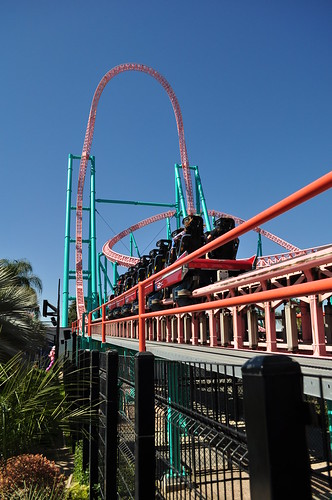
What coaster enthusiasts didn’t know was that Xcelerator was just the prototype for what would eventually hold just about every roller coaster height and speed record for the past 10 years. Starting with Top Thrill Dragster in 2003 (120 MPH and 420 feet tall)

to Kingda Ka in 2005 (128 MPH and 456 feet tall)

to Formula Rosa in 2010 (149 MPH and 176 feet tall), Intamin accelerator coasters have held the record for over a decade now. In addition to using hydraulics to launch trains to insane velocities, water is now used to cool the steel cable that pulls the train down the launch track, due to incidents involving overheating and shredded cables.
So, the use of water and hydraulics to move and propel vehicles is widespread in the theme park industry. As evidenced by Disney’s recent patent filing for modifications to the standard Shoot the Chutes technology, it’s something that will continue to be used and perfected to deliver more realistic and intense experiences for guests.
Previously on "Theme Park Tech":
I enjoyed reading this while 'Working'......
I would love to see an article on the economics of theme parks, you could have a whole series! ;)
.Overall economics of ride design- water vs not, enclosed vs not etc
.Economics driving a design- interview a designer about a design, and how budget impacted it (what was removed/improved/modified would be fascinating)
.Economy of spaces- optimising design of spaces for people flow/ride flow
So while it would probably be a pretty interesting column, it would be insanely difficult to pry this type of information out of a theme park. I had tried late last year to get some information from some local parks about ride evacuation procedures, and they were very hesitant to provide that, and I would expect similar hesitancy when it comes to line item operational costs.
Maybe something along the lines of a historical article about a ride built decades ago might be more feasible to tackle from the cost/benefit/design changes angle.
I come to this site for the high quality content here, and look forward to more excellent work from Russell (and everyone else)!
This article has been archived and is no longer accepting comments.